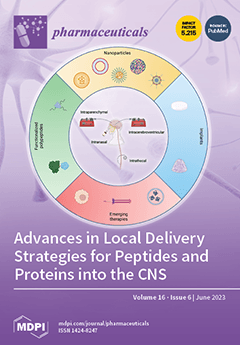Any defects in bile formation, secretion, or flow may give rise to cholestasis, liver fibrosis, cirrhosis, and hepatocellular carcinoma. As the pathogenesis of hepatic disorders is multifactorial, targeting parallel pathways potentially increases the outcome of therapy.
Hypericum perforatum has been famed for its
[...] Read more.
Any defects in bile formation, secretion, or flow may give rise to cholestasis, liver fibrosis, cirrhosis, and hepatocellular carcinoma. As the pathogenesis of hepatic disorders is multifactorial, targeting parallel pathways potentially increases the outcome of therapy.
Hypericum perforatum has been famed for its anti-depressive effects. However, according to traditional Persian medicine, it helps with jaundice and acts as a choleretic medication. Here, we will discuss the underlying molecular mechanisms of
Hypericum for its use in hepatobiliary disorders. Differentially expressed genes retrieved from microarray data analysis upon treatment with safe doses of
Hypericum extract and intersection with the genes involved in cholestasis are identified. Target genes are located mainly at the endomembrane system with integrin-binding ability. Activation of α5β1 integrins, as osmo-sensors in the liver, activates a non-receptor tyrosine kinase, c-SRC, which leads to the insertion of bile acid transporters into the canalicular membrane to trigger choleresis.
Hypericum upregulates CDK6 that controls cell proliferation, compensating for the bile acid damage to hepatocytes. It induces ICAM1 to stimulate liver regeneration and regulates nischarin, a hepatoprotective receptor. The extract targets the expression of conserved oligomeric Golgi (COG) and facilitates the movement of bile acids toward the canalicular membrane via Golgi-derived vesicles. In addition,
Hypericum induces SCP2, an intracellular cholesterol transporter, to maintain cholesterol homeostasis. We have also provided a comprehensive view of the target genes affected by
Hypericum’s main metabolites, such as hypericin, hyperforin, quercitrin, isoquercitrin, quercetin, kaempferol, rutin, and
p-coumaric acid to enlighten a new scope in the management of chronic liver disorders. Altogether, standard trials using
Hypericum as a neo-adjuvant or second-line therapy in ursodeoxycholic-acid-non-responder patients define the future trajectories of cholestasis treatment with this product.
Full article






